Eating Disorders And Autism

A Physician’s Guide to Autism and Eating Disorders
Recent research reveals a significant overlap between autism spectrum disorder (ASD) and various eating disorders. This article explores the prevalence, underlying mechanisms, symptoms, diagnosis, and tailored treatment options for individuals facing both conditions. Focusing on the neurodiversity-affirming approach, we aim to deepen understanding and improve support strategies for affected individuals and their caregivers.
Prevalence and Co-occurrence of Autism and Eating Disorders
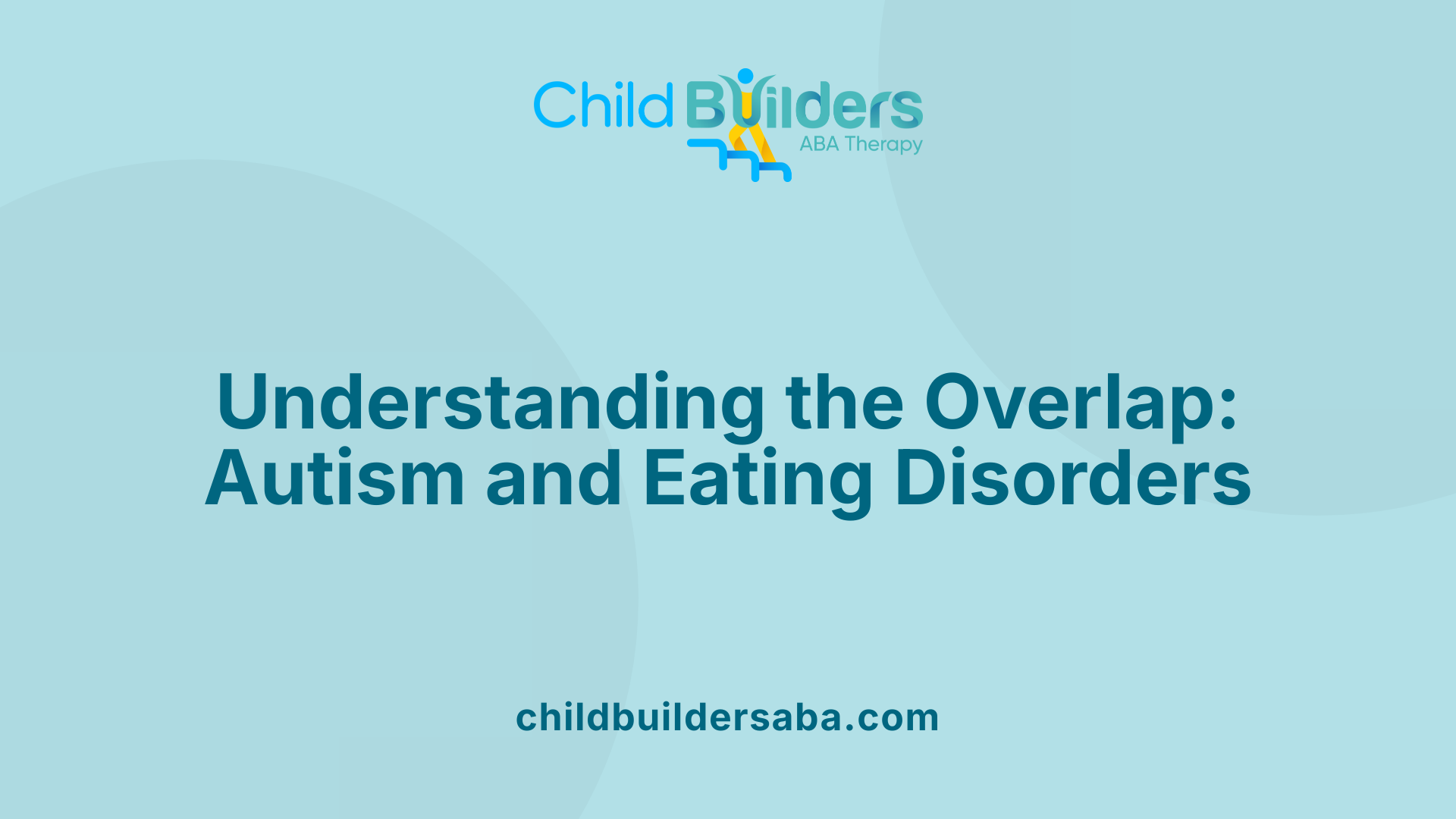
What percentage of individuals with eating disorders are also autistic?
Research indicates that between 4% and 23% of individuals with an eating disorder are also autistic. This overlap highlights a significant connection between the two conditions. Autistic individuals often develop eating disorders due to sensory sensitivities—such as aversions to particular textures, smells, or sounds—and through routines and emotional regulation challenges.
The most common eating disorder among autistic people is anorexia nervosa, characterized by restrictive eating patterns and weight control behaviors. However, avoidant/restrictive food intake disorder (ARFID), involving food avoidance without concerns about body image, is also prevalent. Sensory issues and food selectivity play a large role in these feeding challenges.
Effective support for autistic individuals with eating disorders requires tailored approaches. Strategies include providing accessible treatment formats, involving multidisciplinary teams, and accommodating sensory sensitivities to improve outcomes.
Overall, understanding the extent of this co-occurrence is essential. It helps clinicians develop appropriate, individualized care plans that address both autism-specific needs and eating disorder symptoms. Such awareness can improve the treatment journey and recovery prospects for affected individuals.
Symptoms, Diagnosis, and Clinical Features in Autism-Related Eating Disorders
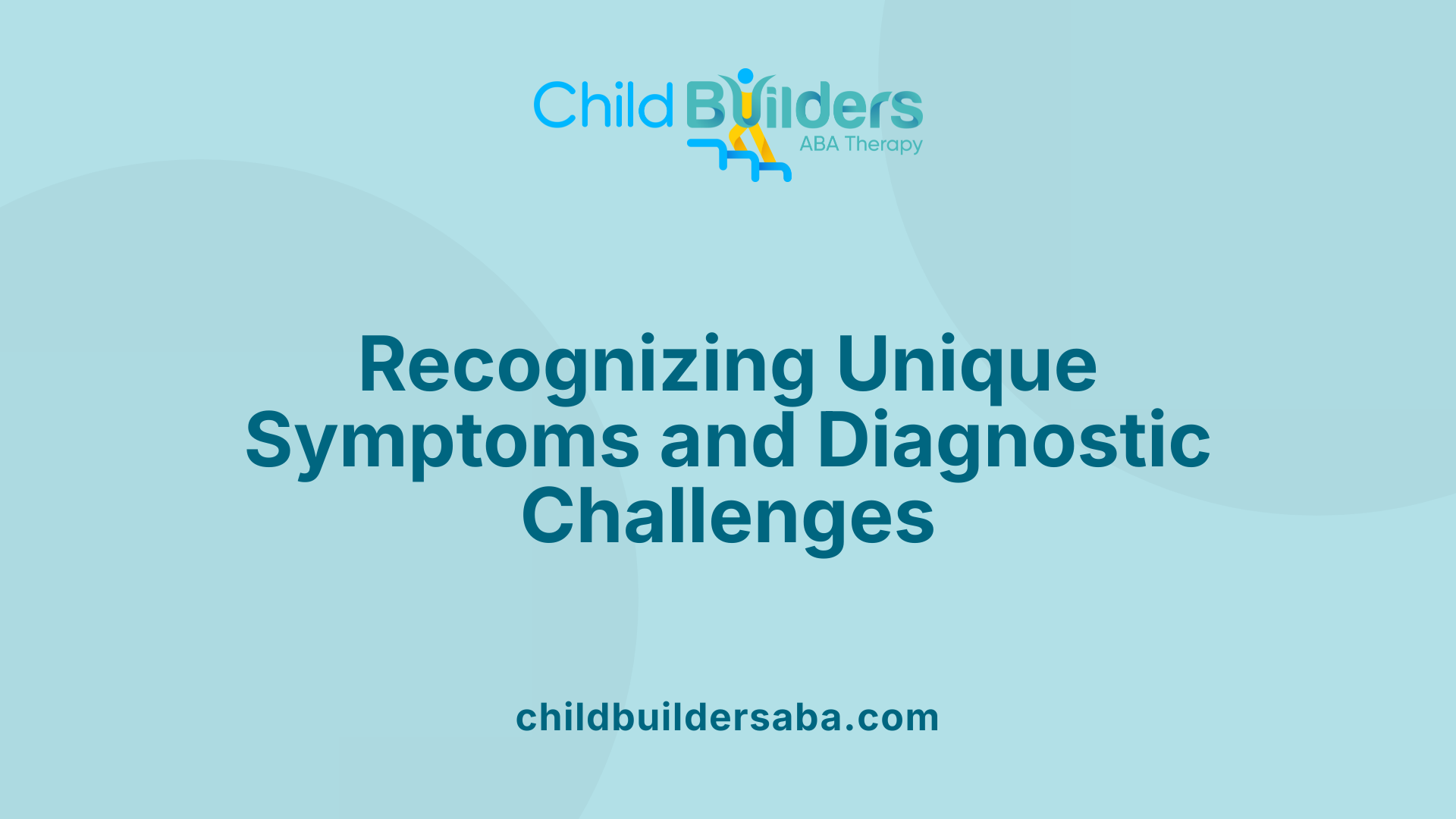
What eating disorder is commonly associated with autism?
Autism is often linked with Avoidant/Restrictive Food Intake Disorder (ARFID). Many autistic individuals show unusual eating behaviors, such as being highly selective about what they eat, due to sensory sensitivities to textures, smells, or the visual appearance of food. They may avoid foods altogether or restrict intake based on routines and rituals that are comforting.
These behaviors stem from heightened sensory processing issues, where certain textures or smells can be overwhelming or unbearable. Additionally, routines and rituals around eating help autistic people maintain a sense of control and predictability, which can lead to rigid eating patterns.
While all eating disorder types such as anorexia or bulimia are seen in some autistic individuals, ARFID is especially common because it originates from sensory-based feeding issues rather than weight or body image concerns. Recognizing this link is essential for developing tailored support systems and effective treatments.
Distinctive symptoms of eating disorders in autistic individuals
Autistic individuals often display symptoms that are different from those typically seen in neurotypical populations. These include extreme food selectivity focused on texture, sensory aversions, and highly ritualized eating routines.
Many autistic people show resistance to trying new foods and may only eat a limited range of textures or tastes. Rituals surrounding mealtime, such as specific presentation styles or eating in a particular order, are common.
Sensory sensitivities not only influence food choices but can also affect social eating behaviors, leading to increased isolation during meals.
Diagnosis challenges due to overlapping behaviors
Diagnosing eating disorders in autistic individuals can be challenging due to overlapping behaviors with autism itself. For example, sensory sensitivities and rigid routines are core features of autism but may look like eating disorder behaviors.
Starvation and malnutrition can produce traits similar to autism, such as repetitive behaviors and social withdrawal, making it harder to distinguish between the two. Additionally, traditional diagnostic tools may not account for sensory and behavioral aspects unique to autism.
Moreover, autism often remains undiagnosed in females or adults, delaying correct recognition of co-occurring eating disorders. Healthcare providers need specialized training to identify autism symptoms when evaluating eating difficulties.
Characteristics specific to ASD that influence eating
Autistic traits that influence eating include heightened sensory sensitivities, difficulties with interoception (perception of internal bodily cues), and a preference for routines and sameness.
Sensory issues may cause aversions to textures, smells, or visual aspects of food, leading to nutritional challenges.
Interoception difficulties make it hard for autistic people to recognize hunger or fullness cues, which can result in irregular eating patterns.
The need for strict routines often results in ritualistic behaviors around meals, further complicating dietary diversity and flexibility.
| Symptom or Trait | Description | Impact on Eating Behavior |
|---|---|---|
| Sensory sensitivities | Overreaction to smells, textures, sounds | Food selectivity, aversions |
| Routine and rituals | Preference for sameness, specific eating patterns | Resistance to change, ritualistic eating |
| Interoception difficulties | Impaired awareness of hunger/fullness | Irregular appetite, overeating or undereating |
| Obsessive interests | Focus on specific foods or nutrition | Obsessive behaviors related to diet or exercise |
Understanding these characteristics helps facilitate tailored interventions that accommodate the unique needs of autistic individuals and improve their nutritional and psychological outcomes.
Underlying Causes and Theoretical Models Explaining the Link
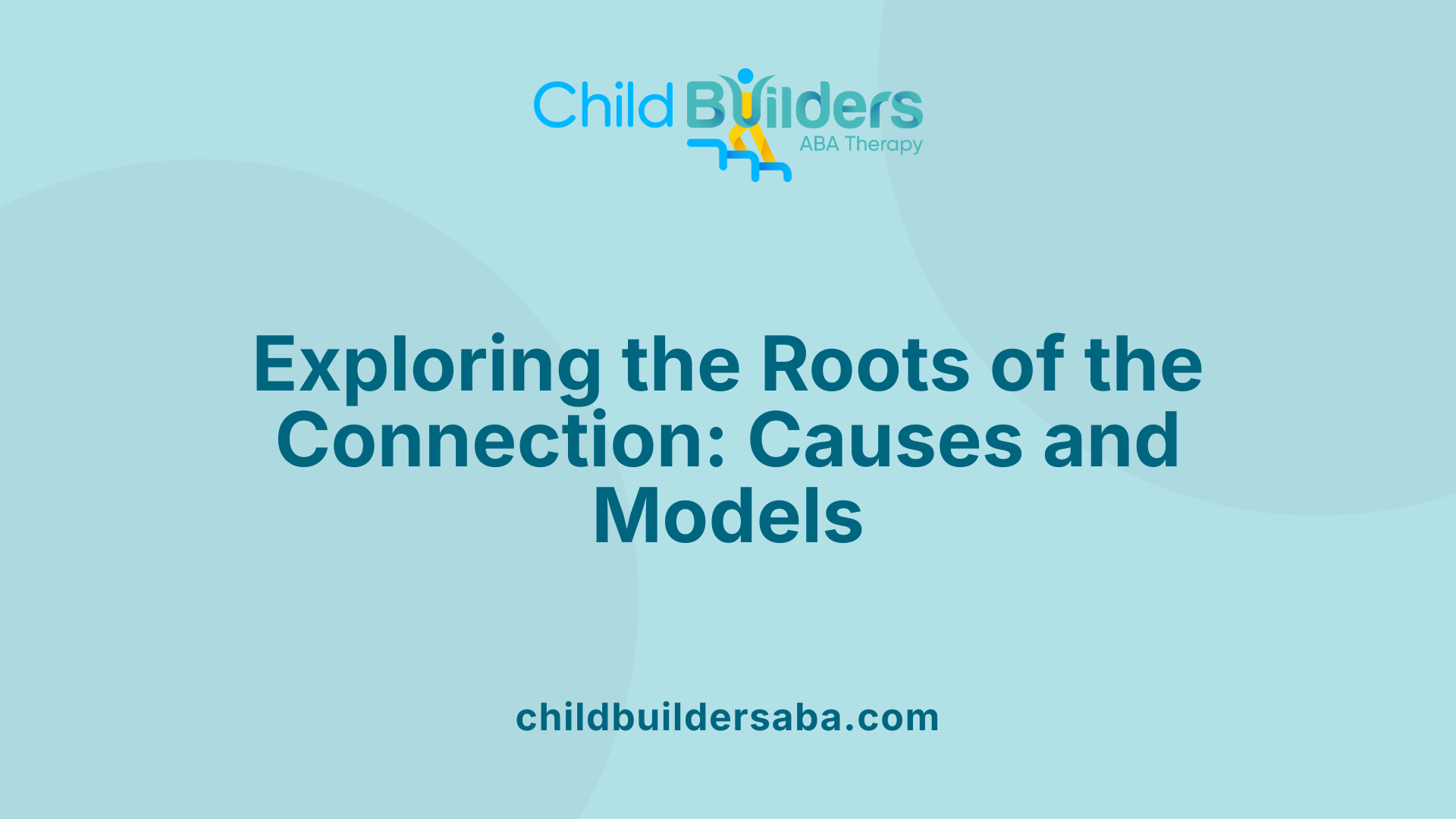
What is the connection between food and autism?
Research exploring the relationship between food and autism is complex and ongoing. Current evidence suggests that certain dietary factors during pregnancy or early childhood—such as high consumption of processed foods, additives, preservatives, and sugar—may be associated with an increased risk of developing autism spectrum disorder (ASD). However, these findings are not definitive, and the role of diet in autism development remains an area of active investigation.
Dietary influences are just one piece of a multifaceted puzzle. Numerous genetic, neurological, and environmental factors contribute to ASD. Early detection paired with therapies such as speech and occupational therapy can significantly improve developmental outcomes when started at a young age. Overall, diet may influence autism risk to some extent, but it is among many factors involved. More research is necessary to clarify these links and understand the mechanisms involved.
How do sensory processing differences affect eating behaviors?
Many autistic individuals experience heightened sensory sensitivities, especially around food textures, smells, looks, and sounds. These sensory processing differences can lead to extreme selectivity in food choices, often classified as feeding or eating problems, such as severe food refusal or aversions. For example, a person might refuse to eat foods with certain textures, like crunchy or slimy, or react negatively to specific smells or sounds during meals.
Such sensitivities are not merely preferences but are rooted in how the autistic brain processes sensory information. As a result, eating can become an overwhelming experience, leading to limited diets and nutritional deficiencies. Therapeutic interventions often aim to gradually desensitize sensory responses while respecting individual sensitivities.
The influence of routines and obsessional interests
Routines and rigid behaviors are core features of autism. Many autistic individuals develop strict eating routines and rituals, such as eating the same few foods repeatedly or following specific procedures around mealtime. These behaviors can provide a sense of predictability and control, reducing anxiety in an unpredictable world.
Obsessional interests often focus on specific aspects like food or nutrition, which can escalate into restrictive eating patterns. Such routines may mimic or overlap with obsessive-compulsive disorder behaviors, complicating the clinical picture. Healthcare providers recommend tailored approaches that incorporate these routines and interests into treatment plans.
Shared biological and psychological factors
Research suggests that some biological and psychological mechanisms may underlie both autism and eating disorders. Shared features such as inflexible thinking, obsessional behaviors, and difficulties with emotional regulation are common to both conditions. Neurobiological factors, including atypical brain connectivity and neurochemical variations, might also contribute to their co-occurrence.
Moreover, genetic predispositions influence both autism and eating disorder susceptibility. These overlapping factors imply that some individuals have a neurodevelopmental profile that makes them more vulnerable to disordered eating behaviors, especially under stress or during developmental stages like adolescence.
The role of alexithymia and emotional processing
A prevalent trait in many autistic individuals is alexithymia—the difficulty in recognizing, understanding, and expressing emotions. This emotional processing difficulty can contribute to the development of eating disorders as a coping strategy. For example, restricting food intake may serve as a way to exert control or manage overwhelming feelings that the individual cannot verbalize.
This emotional challenge impacts treatment because traditional therapies often focus on emotional awareness and expression. Adapting interventions to account for alexithymia, such as using visual aids or structured routines, can improve engagement and outcomes. Recognizing these neuropsychological features is essential for creating effective, individualized treatment strategies for autistic individuals facing eating challenges.
Sensory Sensitivities and Rigidity in Eating Behaviors
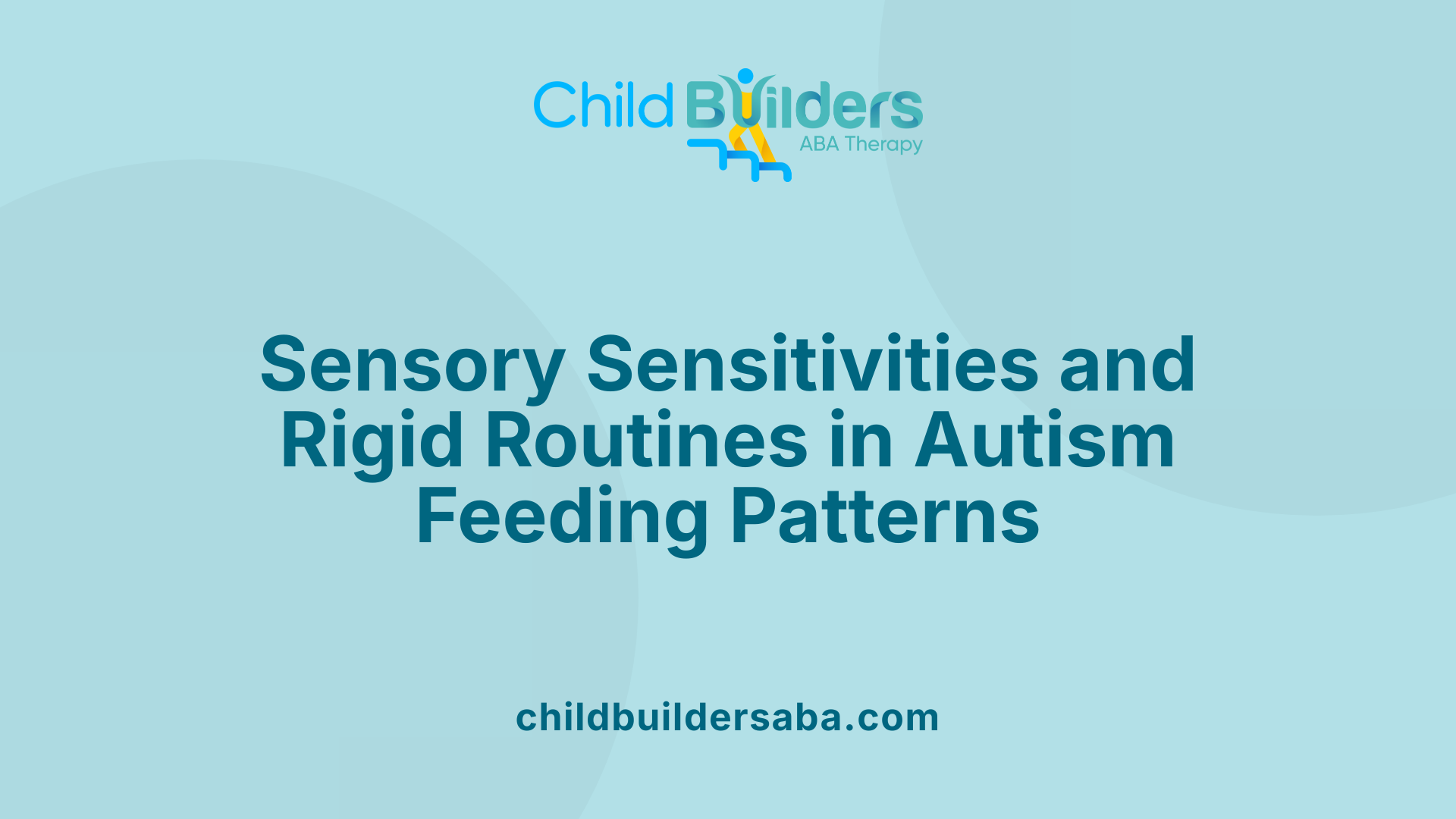
How do sensory issues influence eating behaviors in autistic individuals?
Many autistic people experience heightened sensitivities to food textures, smells, looks, and sounds. These sensory sensitivities can make certain foods unpleasant or even intolerable, leading to highly selective eating habits. For example, a person might avoid foods with specific textures, such as mushy or gritty foods, or be overwhelmed by strong odors or bright colors.
This sensory overload can cause distress during mealtimes and promote a preference for only a narrow range of familiar foods. Similarly, sensory underload, where stimuli are insufficient or overwhelming, also plays a role in eating challenges.
What role do routines and rituals play?
Autistic individuals often prefer strict routines and rituals around eating. They might insist on specific food presentations, eating at exact times, or consume foods in a particular order. Such rigidity provides comfort and predictability, reducing anxiety associated with mealtime variability.
This need for routine can sometimes resemble or contribute to disordered eating behaviors, especially when food preferences become inflexible or when ritualistic behaviors interfere with social interactions.
How does sensory overload or underload affect eating?
Sensory overload—experiencing too many stimuli—can result in avoidance of certain foods or refusal to eat altogether. Conversely, sensory underload, where the sensory input is insufficient or dull, can diminish interest in eating or cause distress.
Managing these sensory sensitivities is crucial, as they heavily influence how autistic individuals experience and approach eating. Support strategies such as creating calm eating environments, gradually introducing new foods, and respecting sensory preferences can help improve eating routines.
Understanding sensory sensitivities and routines in autism is vital for developing tailored approaches to support healthy eating habits and reduce distress during mealtimes.
Impacts of Autism on Eating Behaviors, Food Preferences, and Feeding Challenges
How autism influences food selectivity and aversions
Autistic individuals often experience heightened sensitivities to textures, smells, sounds, and the appearance of food. This sensory processing can lead to highly selective eating patterns, where certain foods are refused due to their texture or sensory qualities. Many autistic people develop rigid food preferences and show resistance to trying new foods, which is sometimes mistaken for eating disordered behavior but is rooted in sensory sensitivities.
Feeding challenges in autism may include difficulty chewing, swallowing, or tolerating certain tastes and smells. These issues can result in extreme food selectivity and a limited diet, often characterized by a preference for safe, familiar foods. This selectivity can sometimes progress into feeding disorders such as Avoidant/Restrictive Food Intake Disorder (ARFID), particularly when sensory sensitivities are severe.
Interoception difficulties and their effect on hunger/fullness cues
Another factor influencing eating behaviors in autistic individuals is interoception—the ability to perceive internal bodily signals like hunger and fullness. Many autistic people have difficulties with interoception, making it challenging to recognize when they are hungry or full.
This can lead to irregular eating patterns, such as undereating or overeating, and impede intuitive eating. As a result, autistic individuals might not respond appropriately to their body's cues, which can complicate both their eating habits and nutritional intake, potentially contributing to eating disorders or nutritional deficiencies.
Behavioral rituals and their role in eating habits
Many autistic individuals develop routines and rituals around eating, which provide a sense of familiarity and control. These rituals can include specific ways of presenting food, particular seating arrangements, or strict timing of meals.
While these behaviors are often protective and comforting, they can also become inflexible and interfere with social eating opportunities. Ritualistic behaviors around food might resemble disordered eating patterns but are primarily driven by a need for sameness and predictability.
Understanding these patterns is essential for supporting autistic individuals in establishing flexible and balanced eating habits, whether through tailored therapies or environmental adjustments. Overall, recognizing the sensory and routine-based influences on eating can help develop more effective, autism-informed eating support strategies.
Treatment Approaches and Special Considerations for Autistic Individuals with Eating Disorders
What support strategies and treatment modifications are beneficial for autistic individuals with eating disorders?
Supporting autistic individuals with eating disorders requires tailored approaches that recognize their sensory sensitivities, communication styles, and emotional regulation abilities. One effective strategy is providing information and therapy in accessible formats, such as visual aids or simple language, to facilitate understanding and reduce anxiety.
Ensuring the therapeutic environment is sensory-friendly is crucial. This can involve adjusting lighting, reducing noise levels, and incorporating sensory tools or comfort items to make the setting less overwhelming.
Consistency is also important; maintaining regular appointment times and predictable routines helps reduce stress and build trust. For some, one-on-one therapy sessions allow for more focused support tailored to their specific needs.
Family involvement plays a vital role, with parents and caregivers being trained to support and reinforce positive eating behaviors outside of clinical sessions.
Environmental modifications may include offering sensory-based interventions, such as textured or alternative food options, and adapting mealtime routines to accommodate sensory preferences and avoid triggers.
A multidisciplinary team usually collaborates to deliver holistic care. This team typically comprises behavior therapists, speech therapists, occupational therapists, and medical professionals. Their combined expertise focuses on addressing both the sensory and emotional challenges faced by the individual.
Integrating autism-informed and neurodiversity-affirming practices not only improves engagement but also enhances treatment outcomes. This approach emphasizes respecting the individual's neurodiverse identity and promoting self-acceptance while working towards healthier eating patterns.
Research Findings and Empirical Evidence on Autism and Eating Disorders
Prevalence Data from Population Studies
Research indicates a significant overlap between autism spectrum disorder (ASD) and eating disorders. Population studies across various countries, including the UK and Denmark, reveal that approximately 20% of individuals with anorexia nervosa also exhibit autistic traits or receive an autism diagnosis. Conversely, up to 30% of adults with eating disorders may also be autistic. In youth, the co-occurrence is slightly lower but still notable, with estimates ranging from 4% to 23%. These findings highlight the importance of screening for autism traits in individuals with eating disorders.
Neuroimaging and Genetic Studies
Recent neuroimaging research suggests shared neurobiological pathways between autism and eating disorders. Structural and functional brain scans point to overlapping regions involved in sensory processing, emotional regulation, and cognitive rigidity. Genetic studies further support this connection, indicating that common genetic factors may predispose individuals to both conditions. Although the exact mechanisms remain unclear, these shared biological underpinnings reinforce the idea that autism and eating disorders are interconnected rather than entirely separate entities.
Longitudinal Outcomes and Treatment Response
Long-term follow-up studies show that individuals with co-occurring autism and eating disorders often experience more severe and persistent symptoms. Treatment outcomes tend to be poorer, particularly when autism is unrecognized or unaddressed. Research emphasizes that early diagnosis and tailored interventions—incorporating sensory sensitivities and routines—can improve prognosis. Adapted therapies, such as specialized family-based treatments and approaches recognizing autism-specific needs, have demonstrated better engagement and outcomes, although more research is needed to optimize these strategies.
Challenges, Risks, and Safety Considerations in Treatment
Poorer treatment outcomes and lower responsiveness
Autistic individuals with eating disorders often face more difficulties in responding to standard treatment approaches. Their rigid routines, sensory sensitivities, and communication challenges can hinder progress, resulting in longer and more complex recovery processes. Tailored interventions that accommodate autism-specific traits are essential to improve their chances of recovery.
Increased risks related to nutritional deficiencies, Pica, and deteriorating health
Autistic people are at heightened risk of experiencing severe nutritional deficiencies due to selective eating habits, aversions, or food refusal. Conditions like Pica, where individuals eat non-food items such as paper or stones, pose serious health hazards. Untreated nutritional issues can lead to complications such as anemia, weakened immune function, and organ problems.
Need for careful monitoring and risk management
Rigorous monitoring is vital when managing eating disorders in autistic individuals. Healthcare providers must carefully observe for signs of medical deterioration, such as rapid weight loss, dehydration, and electrolyte imbalances. Risk management strategies should include environmental modifications, close health surveillance, and personalized treatment planning to ensure safety throughout recovery.
| Aspect | Focus | Additional Considerations |
|---|---|---|
| Treatment Outcomes | Recovery challenges | Autism traits can lower responsiveness to traditional therapies |
| Health Risks | Nutritional deficiency, Pica | Serious health risks requiring medical attention |
| Monitoring | Risk management | Continuous assessment, tailored care, and family involvement |
Understanding and addressing these safety considerations are crucial in effectively supporting autistic individuals through their recovery journey from eating disorders.
Future Directions and Needs for Tailored Interventions
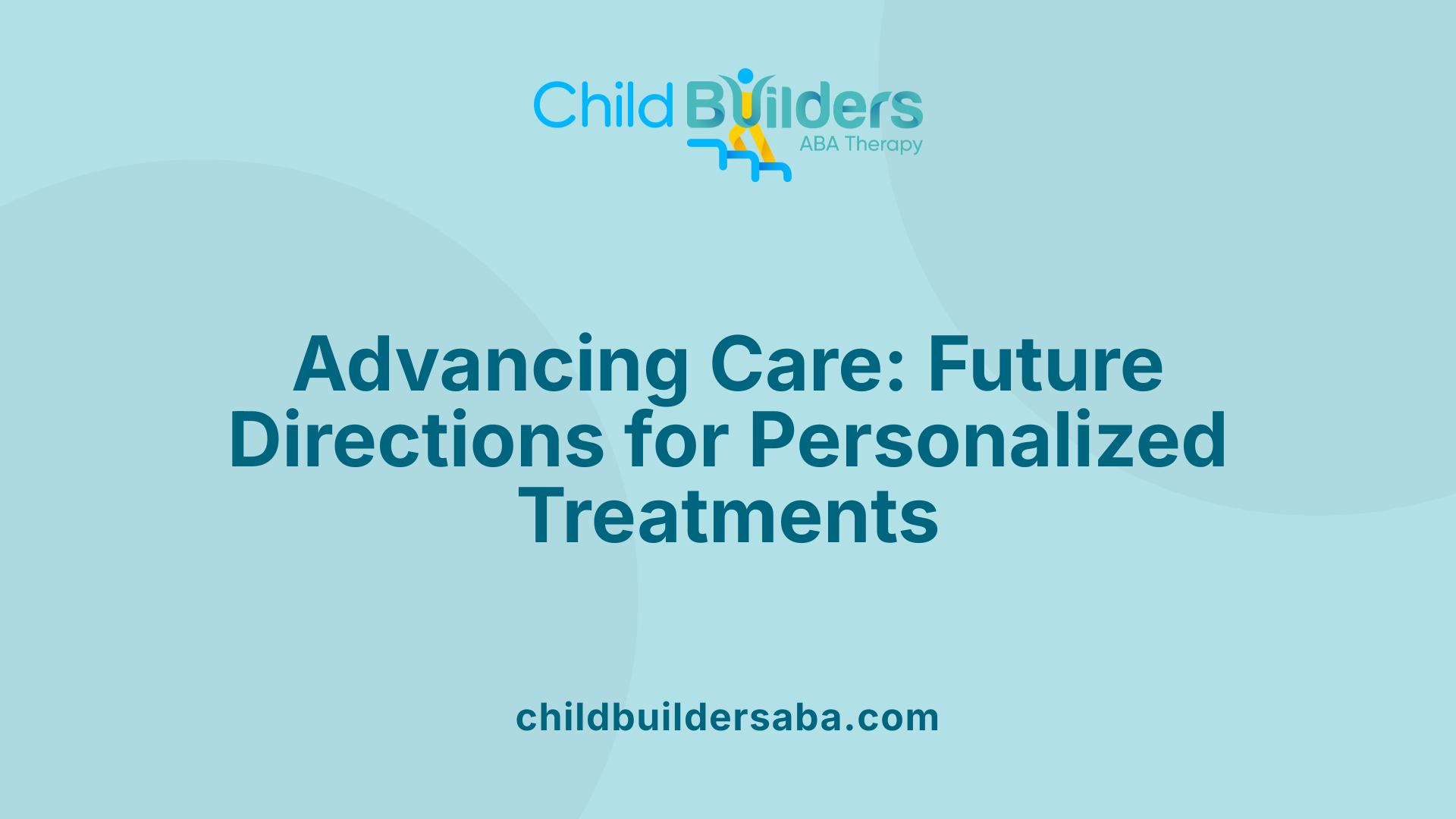
Development of specialized treatment guidelines
Current treatments for eating disorders are generally designed for neurotypical populations, which often leads to poorer outcomes for autistic individuals. The development of specific guidelines that address the unique sensory, cognitive, and emotional needs of autistic people is crucial. These guidelines should incorporate strategies for managing sensory sensitivities, routines, and communication preferences, ensuring that therapy environments are accessible and supportive.
Increased research on gender differences and adult populations
Much of the existing research focuses on young males and children, but women and adults with autism and eating disorders face distinct challenges. Women, particularly, tend to be underdiagnosed, which delays intervention and worsens prognosis. Further studies should explore how autism manifests in different genders, especially in adult populations, and how these variations influence the development, presentation, and treatment outcomes of eating disorders.
Innovations in therapy that accommodate autism traits
Emerging therapeutic approaches are focusing on adapting standard interventions to better suit autistic individuals. This includes sensory regulation techniques, such as the 3 E's—Emotions, Environment, Extras—which help manage sensory overload or underload. Also, implementing streamlined communication methods, providing predictable routines, and involving family support are some ways to improve treatment efficacy.
Progress in these areas can lead to better health outcomes, improved quality of life, and more inclusive mental health services. Ongoing research and clinical innovation are essential to address the complex needs of autistic individuals with eating disorders, moving toward more personalized and neurodiversity-affirming care.
Towards Better Support and Outcomes
Recognizing and understanding the intersection of autism and eating disorders is vital for developing effective, personalized interventions. As research advances, greater emphasis should be placed on autism-informed care practices, addressing unique sensory and emotional needs. Promoting neurodiversity-affirming approaches, engaging multidisciplinary teams, and increasing awareness among clinicians and families will facilitate better recovery trajectories and improved quality of life for affected individuals. Continued research, resource development, and policy support are essential to bridge existing gaps and foster equitable, effective treatments.
References
- Eating Disorders and Autism
- Eating disorders - National Autistic Society
- Potential mechanisms underlying the association between feeding ...
- Eating, eating disorders and autism | What is autism? - Autistica
- Will eating disorder program help with autism-related food aversions?
- Autism diagnosis in females by eating disorder professionals - PMC
- Why So Many People with Autism Have Eating Disorders
- PEACE Pathway - Home
- Eating disorders and autism - Beat



.jpg)

































































































